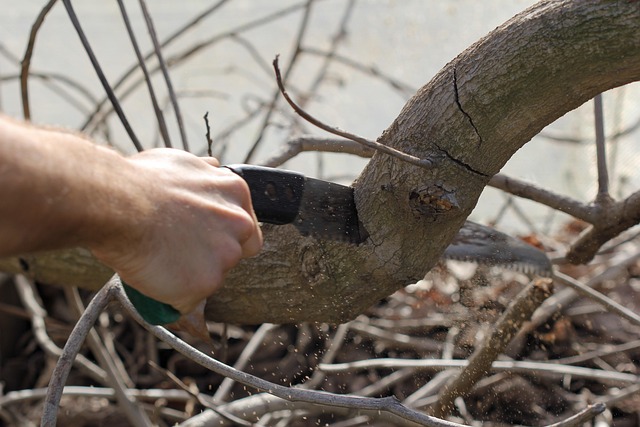Tree Cutting in Glasgow
A Practical Guide for Healthy Trees: Tree Cutting in Glasgow
Scotland’s trees are tough. They survive howling Highland winds, relentless rain, and even the occasional snowstorm in May. But even the hardiest Scots pine or ancient oak sometimes needs a helping hand—and that’s where proper tree cutting in Glasgow makes a difference.
When it’s done right, trees thrive and give years of pleasure… and when it goes wrong, tree become misshapen and dangerous while becoming riddled with disease. A simple trim at the right time makes all the difference.
Whether you’re a gardener, landowner, or just someone who cares about Scotland’s trees, this guide will help you make smart choices—from legal rules to seasonal tricks arborists swear by.

Why Cutting Trees Isn’t Just About Chopping Them Down
Good tree cutting isn’t about destruction—it’s about helping trees grow stronger. Think of it like a vine: done well, it keeps things healthy and producing grapes. Done badly, and you’ve got a mess.
When Tree Cutting in Glasgow Helps (And When It Hurts)
✔ DO prune to:
Stop disease spreading (like ash dieback).
Stop branches smashing into your roof in the next storm.
Using Tree Pruning Services to give young trees a better shape (so they don’t grow lopsided).
❌ DON’T prune just because:
- You want more sunlight
You don’t like leaves falling on your driveway.
Your neighbour, the ‘expert’, told you to
The are often times I see the result of a quick ‘prune’ turning into a damaged and unsafe tree, resulting in more serious effects later on. Even neighbours seems to be on a mission at times to topple a tree by cutting one half of it because they don’t like it overhanging their garden.
Doing this destabilises the balance of a tree and in the next wind, may cause more damage than just a few leaves on the garden shed!
Scotland’s Tricky Trees: What to Cut (and When)
Not all trees are the same. A willow in Glasgow needs different care than a windswept pine in Skye.
Here are a few examples of Scotland’s trees needing a little more care than at first presumed.
1. Scots Pine – The National Tree That Hates Heavy Hands
Problem: They drop dead lower branches naturally—but if you cut too much, they struggle.
Fix: Only remove clearly dead wood in late winter. Never “top” them (it’s like cutting off their head).
2. Rowan – The Bird Magnet
Problem: People prune too early and ruin the berries birds rely on.
Fix: Wait until after autumn when berries are gone. Thin crowded branches to stop them splitting in wind.
3. Silver Birch – The Drama Queen
Problem: They “bleed” sap if cut wrong.
Fix: Prune in late summer (not spring!). And go easy—never take more than 20% off.
Fun fact: A landscaper once told me birch sap can be used to make wine. I haven’t tried it… yet.
Urban vs. Rural: The Big Differences
There are differences, and there are also wildlife considerations too. We ourselves are an environmentally concerned business and are uniquely aware of what the differences are. Sometimes good and at times quite upsetting…
City Trees (Edinburgh, Glasgow etc.)
Trees in cities often have it the most difficult. Knowing when Tree Cutting in Glasgow or Stirling should take place, how much and what the resulting impact will have on your neighbours will be the biggest consideration.
With more and more emphasis on maintaining the trees in an attempt to bring life back to our concrete landscape often means walking a delicate tightrope between what is good for the tree and good for the owner.
Consider a these when tree cutting in Glasgow:
Watch for: Power lines, pavements cracking from roots, and council rules.
Top tip: If a tree has a TPO (Tree Preservation Order), even trimming needs permission. Fines can hit £20,000!
Countryside Trees (Highlands, Islands etc.)
The big outdoors. Scotland has some of the most beautiful landscapes in the world. Manicured estates, wild ancient woods and rolling hills, but this too needs to be taken into consideration when tree cutting and replacement is a must.
There is more wildlife on the prowl to eat tender shoots, and often trees can become a big hazard near roads where they stand alone against some harsh weather.
Consider these differences to tree cutting in Glasgow:
Watch for: Deer eating new growth, storms snapping overloaded branches.
Top tip: Coppicing (cutting back to stumps) works wonders for willow and hazel—but do it in winter when deer are less hungry.
I’ve often heard of land owners in the islands not protecting newly planted trees and the local deer population coming down at night to enjoy a fresh tasty munch on that prized new hedge.
The Golden Rules of Tree Cutting
It all. seems simple. Take a saw from behind the pile of wood in the shed, lop of a few unruley branches and continue on your way. But before you do consider the importance of what the tree needs and what you may be doing to it.
Like cutting your finger on a rusty nail, you can infect a tree too. It’s bark is it’s protect layer and damaging it will introduce disease and cause greater injury which may result in the loss of limb or worse, the whole tree.
Use these tips to get started, but we would you rather call an arborist for advice first. They will be happy to help you now and see your trees healthy than to see you in a year or two’s time to see a dead and dangerous tree.
Sharp tools = happy trees. A clean cut heals faster.
Never prune in nesting season (March-August). It’s illegal and just cruel to birds.
When in doubt, call a pro. The Scottish Arboricultural Association has a list of certified tree surgeons.
I wrote about the Basics of Tree Pruning before if you want to read more about the topic.
Final Thought: Trees Remember How You Treat Them
A well-pruned tree lives longer, stays safer, and supports wildlife. A butchered one becomes a hazard.
So next time you pick up the saw, ask: “Am I helping—or just hacking?”
Need more help with tree cutting in Glasgow? Forestry Scotland offers free guides on native tree care. Or drop a question below—I’m happy to help!
